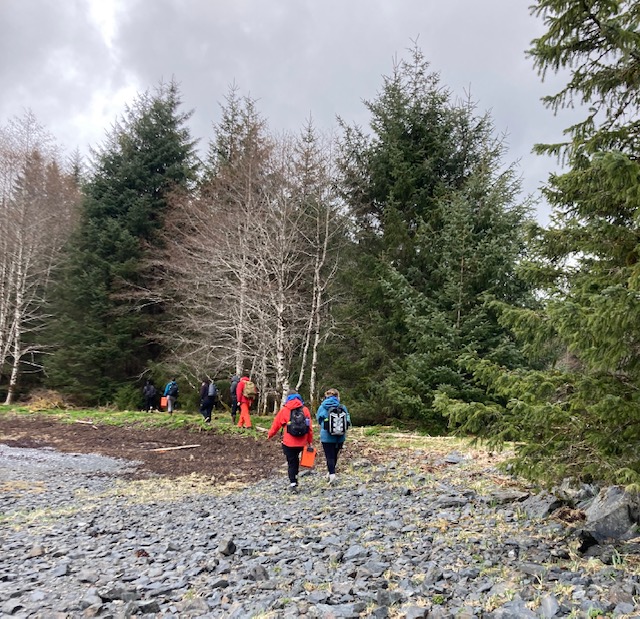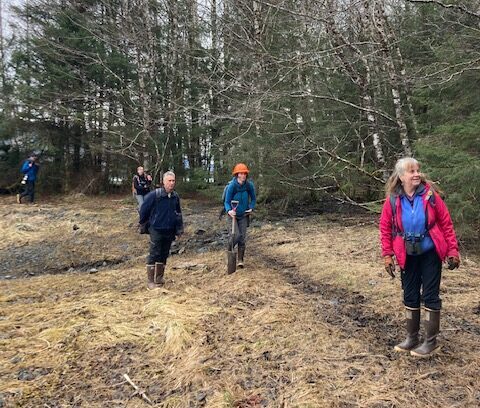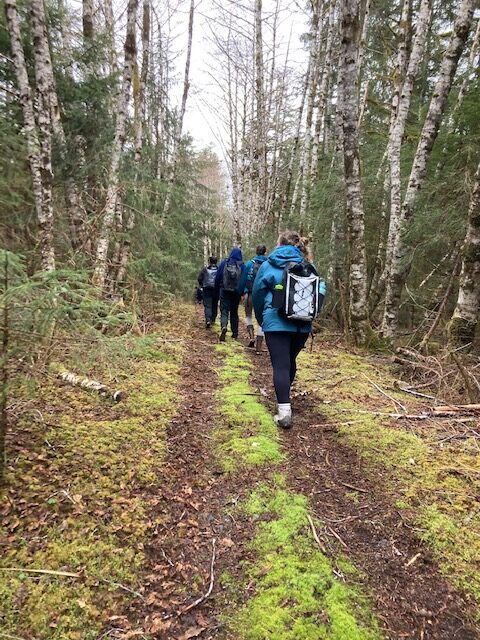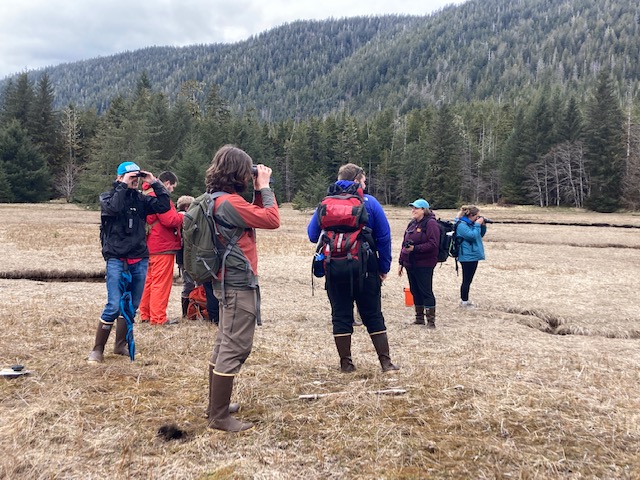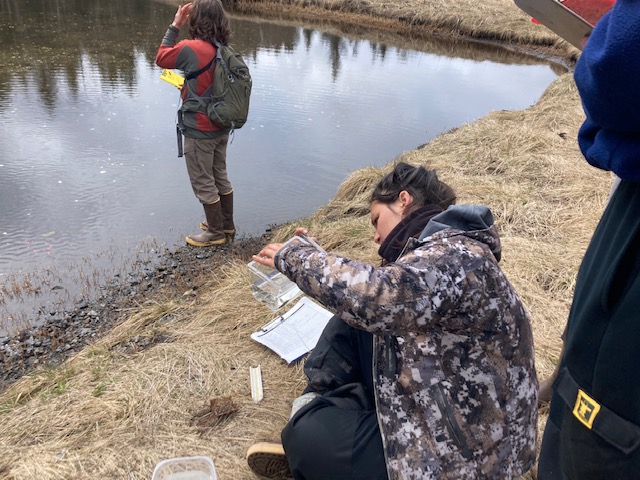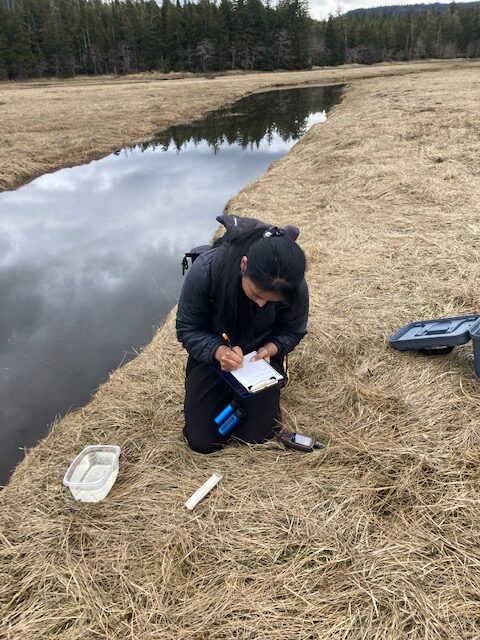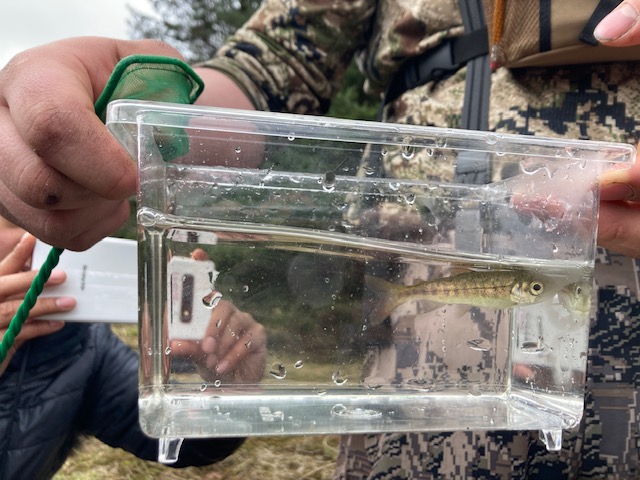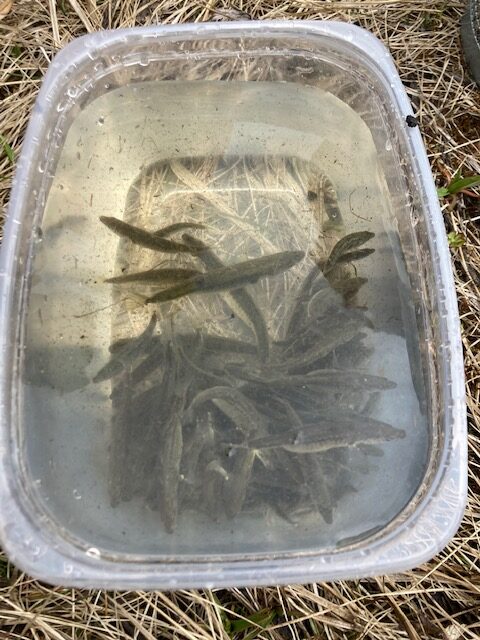
News
News
News
Students and Scientists Come Together for an Unforgettable Field Trip
What does a soil scientist, a botanist, a fish biologist, and a bird expert have in common? Why Sitka High School’s Field Science class of course! On April 27th, students, local experts, and representatives from the U.S. Forest Service, the University of Alaska Southeast Sitka Campus, and the Sitka Sound Science Center joined forces to study the rich diversity of life wetlands have to offer on Kruzof Island. In the weeks leading up to the event, experts attended field science classes to teach preparatory lessons to the students. These lessons ranged from learning the intricacies of proper fish handling techniques to utilizing bird song identification technology. With the high school students prepped and eager to test their knowledge, they were ready for an amazing field trip!![]()
After an enjoyable hour boat ride from Allen Marine, with ample whale watching opportunities, students arrived at the study site in Dry Pass. Nestled off of Krestof Sound, the site encompasses a breathtaking tidal flat surrounded by muskegs and thick vegetation, with freshwater streams crisscrossing throughout the marshy flats. The start of the field trip saw students hike along an old logging road, left over from the 1970s when logging was rampart on Kruzof Island, until arriving at the wetlands.
The students then split into two groups; the first group going off with plant aficionado Kitty LaBounty and soil scientist Jacquie Foss, the second group joining SSSC fish biologist Alex McCarrel and bird whisperer Denise Turley. Naturalists Don Kluting and Matt Goff also accompanied the group to share their local knowledge and expertise. Students then rotated throughout the day, taking turns participating in all aspects of wetland ecology field science.
The students had an amazing time using minnow traps to study the fun array of aquatic species marshy wetlands have to offer. Comparisons where made between trap locations, with students noticing the difference in habitat preference between different fish species. One highlight of the day was discovering over ninety three-spine sticklebacks in a single minnow trap, set in a muddy puddle in the middle of the tidal flats! We were also overjoyed to observe coho fry and abundant sculpins. Students had the opportunity to practice their fishery field techniques, including how to properly measure the length of a squiggling fish and ways to identify Southeast Alaskan fish species at different life stages.
At the end of the day, professionals and students alike where impressed by the beautiful bounty wetlands have to offer us. From digging and characterizing soil pits to identifying song birds by sound, students left the field armed with valuable scientific skills and the knowledge that wetlands are immensely interconnected and form a complex ecosystem. All of this would not be possible without the amazing dedication from Sitka High School Field Science teacher Stacy Golden, who’s vision and leadership brought the whole team together for an amazing day. The final end-of-year project for students will see them utilize what they have learned from the wetlands unit and field trip to create an advocacy project, highlighting a topic of their choice that is relevant to the Sitka community. Overall, we were left grateful of what Sitka and Southeast Alaska has to offer with field-based environmental education, and look forward to the next time we can all get back into nature!
